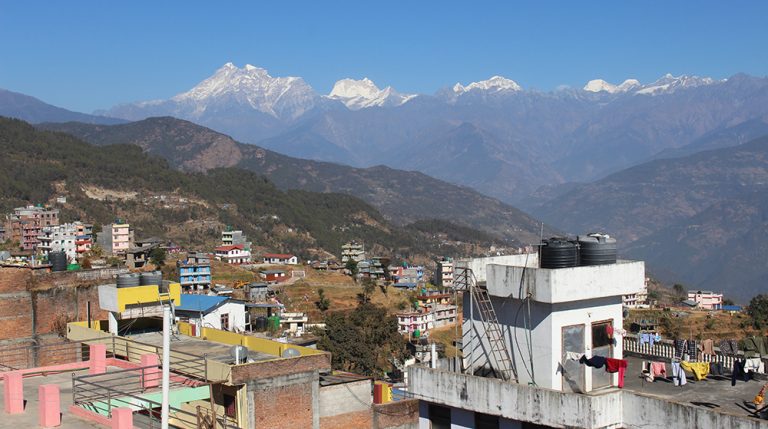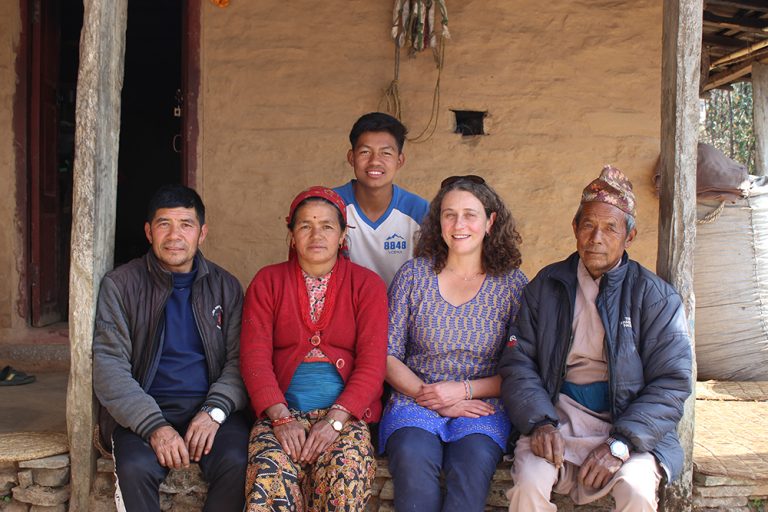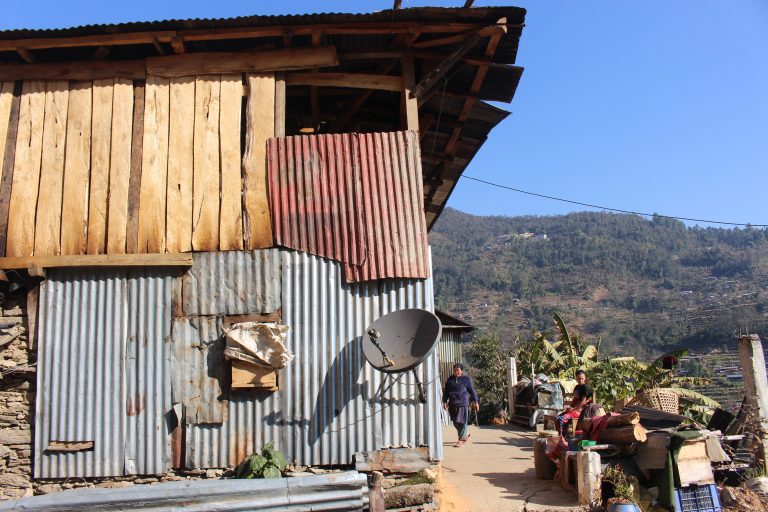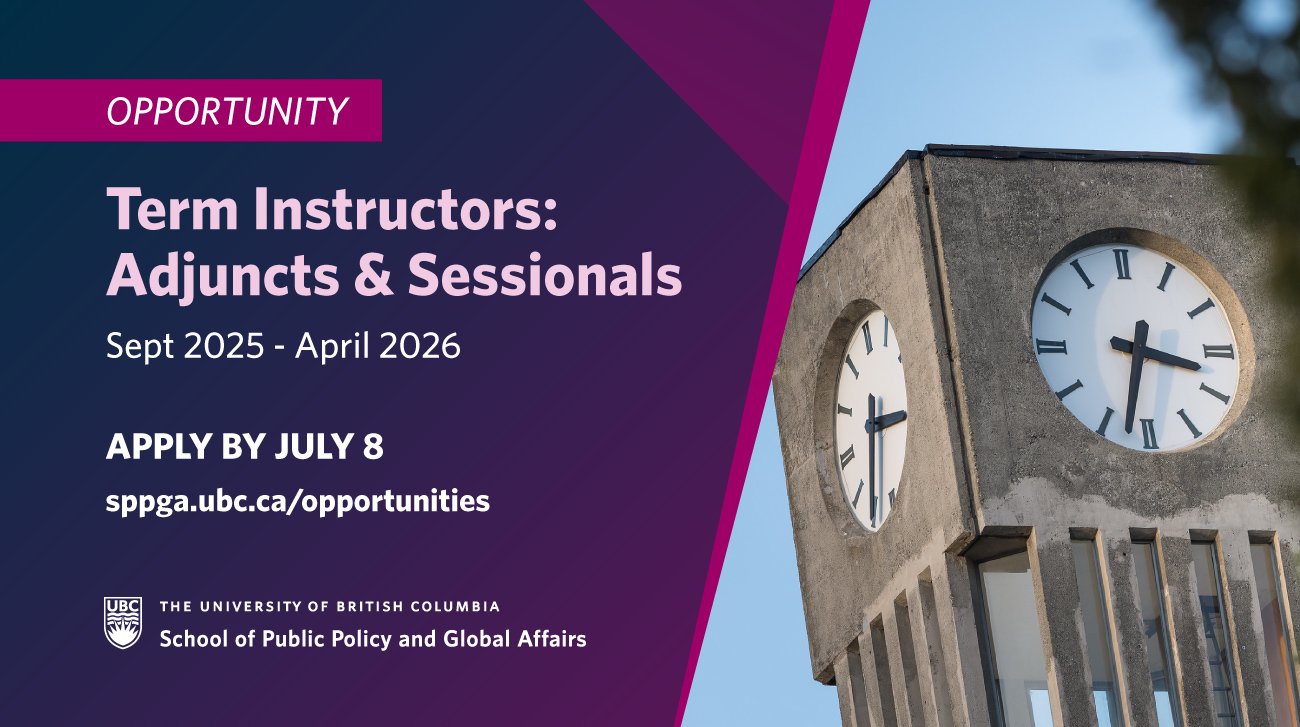

How do we as humans understand the relationships between environmental, political, and social transformation and its associated risks?
Sara Shneiderman, associate professor at the School of Public Policy and Global Affairs and the Department of Anthropology at UBC, has been conducting research in the Himalayas and South Asia through a social transformation and developmental lens for decades. Much of her current research surrounds disaster recovery and preparedness, and she has been working with communities in rural areas of Nepal for over 25 years.
She recently travelled to Nepal in early 2023 as a Co-Investigator with the Sajag-Nepal project—an extensive international partnership between academic, practitioner, humanitarian and government organizations to improve preparedness for the mountain hazard regions in Nepal. Sajag-Nepal is led by Durham University in the UK, and funded by the UK Research and Innovation Global Challenges Research Fund. The partnership aims to generate improved scientific knowledge of the multi-hazard risks facing mountain communities, as well as understanding the lived realities of community members in Nepal as they face regular seasonal landslides and monsoon flooding, as well as extreme events such as earthquakes.


“The goal is to try to understand people’s experience of risk and resettlement from a holistic perspective”
The project involves both natural scientists and social scientists, with the goal of bridging scientific understanding of environmental risks with Indigenous knowledge and lived experience through a range of methodologies and outputs across four different project components. Shneiderman’s ethnography expertise and long-term engagement with Nepali communities is contributing primarily to the first of the project’s four objectives: “thinking critically about the social, economic, and environmental context in which disasters occur in Nepal” . “The goal is to try to understand people’s experience of risk and resettlement from a holistic perspective, bringing together technical knowledge with Indigenous knowledge to inform policy around better preparedness for what is going on in Nepal,” she explains. “For me, it’s been really exciting to work on this project because it gives a very concrete application to my long-standing cultural knowledge.”
During her early 2023 research trip, Shneiderman worked with Sajag-Nepal colleagues based at Northumbria University in the UK, and Social Science Baha, a research institute in Kathmandu, to understand processes of relocation in response to the aftermath of the 2015 earthquakes, as well as ongoing landslide and flooding risk. Nepal’s extreme mountainous terrain means that many of its communities live in direct proximity to impending natural disasters. Landslides are frequent, and monsoon flooding during the summer has been exacerbated by climate change. Some communities in high-risk areas have begun to be relocated by the government to newly constructed settlements in lower-risk areas, but oftentimes on much smaller and less-desirable parcels of land. Many are offered funding to move to these new areas, but in an agrarian economy where land is the primary asset, the subsidies are often not enough to offset the loss of livelihood for those whose lives are built upon farming or crop production.
In communities where scientists from the Sajag-Nepal team have installed slope monitoring systems to monitor data that will help understand the conditions in which landsliding takes place, Shneiderman worked with colleagues to facilitate focus groups and interviews to understand residents’ risk perception and attitudes towards resettlement experiences. Many resettled individuals split their time between their old and new homes seasonally, living in newly built homes in high-risk monsoon seasons, then returning to their old land where they could continue agricultural activities. “In migration studies, it’s now well understood that many people build circular livelihoods, where they go to a temporary place to work then come back to their residential home, shifting our understanding of mobility paradigms from one where we imagine people migrating once for work and never returning”, says Shneiderman, “And we’re seeing something similar around resettlement, that in these kinds of cases the risk of returning is not worse than the risk of loss of livelihood.”


Shneiderman’s research also examines how local communities have challenged policies pertaining to resettlement – something she describes not as explicit protests, but a quieter resistance shown in everyday patterns of living. “These communities are trying to cobble together different resources from these different places they have access to. But this is actually against the explicit state policy for how resettlement is supposed to work, which imagines a singular, more permanent place of residence and livelihood.” Shneiderman’s work with the Sajag-Nepal project moves complex issues like resettlement to the forefront of global research, and allows us to consider how disaster recovery and resettlement policies need to be informed by lived realities of those affected and overall livelihood considerations.
Read more about the ongoing Sajag-Nepal project
Read more about Sara Shneiderman and her research
Photos by Sara Shneiderman: Top (Mt Gauri Shankar from Charikot, Dolakha, Nepal), middle (Post-earthquake housing in Dolakha, Nepal), bottom (Sara Shneiderman with Man Bahadur Thami’s family in Sindupalchok, Nepal).


